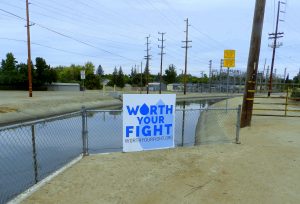
For years now, San Joaquin Valley residents have known the state would be providing more water for fish and the San Joaquin Delta ecosystem. Now that the time for increased flows on the Stanislaus, Tuolumne, and Merced Rivers is near, the protests of Valley leaders can hardly make up for years of cavalier abuse of a public resource.
Consider that even during the worst drought in memory, Valley farmers continued to plant thousands upon thousands of acres of so-called “permanent” crops like almonds and walnuts. Consider also that farmers in the Modesto Irrigation District (MID) and Oakdale Irrigation District (OID) have consistently resisted covering even the costs of delivering their water.
When faced with claims that their electric customers have been subsidizing farmers’ water use for decades, MID Board members insist there’s no way to separate water costs from electric costs. These kinds of public responses don’t exactly build confidence in MID’s accounting methods, nor do they reassure MID’s urban customers who have cut their own water use drastically.
The situation is worse at OID. Even during the height of the drought, OID has managed to sell water outside the district. Last year featured a secret water sale, and in some cases OID has actually abandoned its water rights, both to sell water and to avoid addressing requirements of the California Environmental Quality Act.
OID management claims it needs water sales to balance its budget, but that kind of argument isn’t going to carry much weight with the state, especially when other districts statewide manage without sales.
One of OID’s favorite customers is the Westlands Water District. Westlands is yet another of many districts where farmers planted nut orchards knowing they had very junior surface water rights and poor groundwater. Now, Valley farmers, media, and political leaders are crying that the state has wronged them in its attempt to provide balanced use of a public resource.
Those who claim the state is asking for too much water have tried to frame the argument as “fish versus farmers.” In fact, fish and fisheries involve people just as almond orchards involve people. And water for fish is also water for commercial and recreational interests. It’s water for Delta farmers, residents, nature lovers, environmentalists, and conservationists.
The plain truth is that the almond boom has created an Ag bubble. There’s simply no way to defend adding farm acreage dependent solely on groundwater and then asking the state to keep sending more water to unsustainable farms. And demanding water for less than costs doesn’t exactly win friends among people whose lawns are brown and prices are rising.
Where were Valley media and politicians when the almond boom began attracting speculators like Trinitas Partners? Trinitas was annexed into OID on terms that made it look like the district had water to spare. Local leaders didn’t react until Oakdale farmers began protesting that Trinitas had managed to cut in line ahead of them even with junior water rights.
Yes, farming drives the San Joaquin Valley economy, but the sad fact is the almond boom is unsustainable except in those places with senior water rights and wise water management. It’s also apparent that even during record-setting years, profits from agriculture didn’t trickle down enough to alleviate poverty in a region long known as “The Appalachia of the West.” Now that almond prices are dropping, as everyone knew they would, expect the farmers who took the biggest risks to ask for the most help from the state.
Valley farmers are among the best businessmen in the nation, and the vast majority are model citizens who give as much to their communities as to themselves. Unfortunately, too many became delirious during the almond bubble and began taking their water for granted. Don’t be surprised when the state finds plenty of voter support for a more equitable distribution of what is ultimately a public resource.

Good article